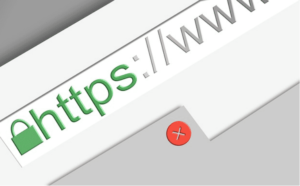How to stay safe when connected to public Wi-Fi


image1


When using a private network, security is not a major concern because often, you have already taken enough precautions to secure the network via measures such as a router VPN, antivirus software, and strong passwords.
Moreover, with a private or home network, you know the provider, and chances are high, you trust them. The same cannot be said for public networks.
With public Wi-Fi, the provider is unknown, two, you have no idea who is connected to the network and three, the security on public networks tends to be flimsy. To protect yourself, consider the following tips.
1. Stick to well-known networks
Well-known networks such as Starbucks are safer because the company in charge of the network is already getting money from you and does not need your data to make money.
Admittedly, no public Wi-Fi is ever 100% secure. However, compared to a free network that shows up on your phone when shopping in the mall or a network from a provider you have never heard off, you are better off sticking to a well-known network. One of the questions you need to ask is, how is the organization providing the network benefiting if everyone in the mall can connect to the network for free?
If you are in a location or city that you do not frequent, then try connecting to a network you have used on previous visits.
2. Avoid sites that do not use HTTPS


As of July last year, Google started labeling all sites that were not using Hypertext Transfer Protocol Secure (HTTPS) as unsafe. HTTPS is a secure protocol that governs communication on the internet.
It is an extension of Hypertext Transfer Protocol (HTTP) that was in wide-scale use a few years ago but lacked the secure component. When the secure component was introduced, it allowed sites to encrypt the data.
When browsing over HTTPS, because of the encryption, those in the network are unable to see the communication between you and the site’s server.
On the other hand, if you are on HTTP, then anyone on the public Wi-Fi can eavesdrop on the communications.
3. Consider using a VPN on all your devices
Using a VPN is arguably the most effective way of staying safe when on public Wi-Fi. Why? For one, a VPN encrypts all the data moving to and from your device. Second, a VPN redirects your traffic through a secure server, ensuring that others in the same network cannot eavesdrop on your communications.
However, when choosing a VPN, keep in mind that VPNs are not created equal. Some use protocols that offer maximum protection while others, not so much. In particular, avoid free VPNs because often, the free service means you are paying with your data instead.
With regards to paid ones, scrutinize the protocols they use, their reputation, and the servers they offer.
4. Change your file sharing settings
Before connecting to any public Wi-Fi, first, check on your file sharing settings, especially if you are on a computer. If it is a PC,
- Go to Network and Sharing
- Click on Change Advanced Sharing Settings
- Switch off File and Printer Sharing
If you are using a Mac,
- Find System Preferences
- Click on Sharing and unselect all the options
If you are using AirDrop on Mac, remember to set the setting such that you are discoverable to no one. With all the settings set as noted above, then no one in the same public network you are using can grab files from your computer.
When using a phone, remember not to leave your Bluetooth on as that is a channel a hacker can exploit when on the same network.
5. Be careful with the information you give out
Anytime you are using a public Wi-Fi, be very careful when giving out sensitive information. If you encounter a network asking for personal information such as phone number or email address, back off.
Alternatively, you can sign up using a non-primary email address. Often, networks that ask for email addresses do so for marketing purposes. They want to recognize you across various hotspots so they can send targeted ads.
Final tips
Finally, when signing up to anything, try and read the terms and conditions. It might take time, and a lot of it might not make sense, but it will help you understand how the organization intends to handle your data.
Also, ensure your devices have strong firewalls and anti-malware software.
Author: Hackers Interview
Spreading the Voice of Hackers.




